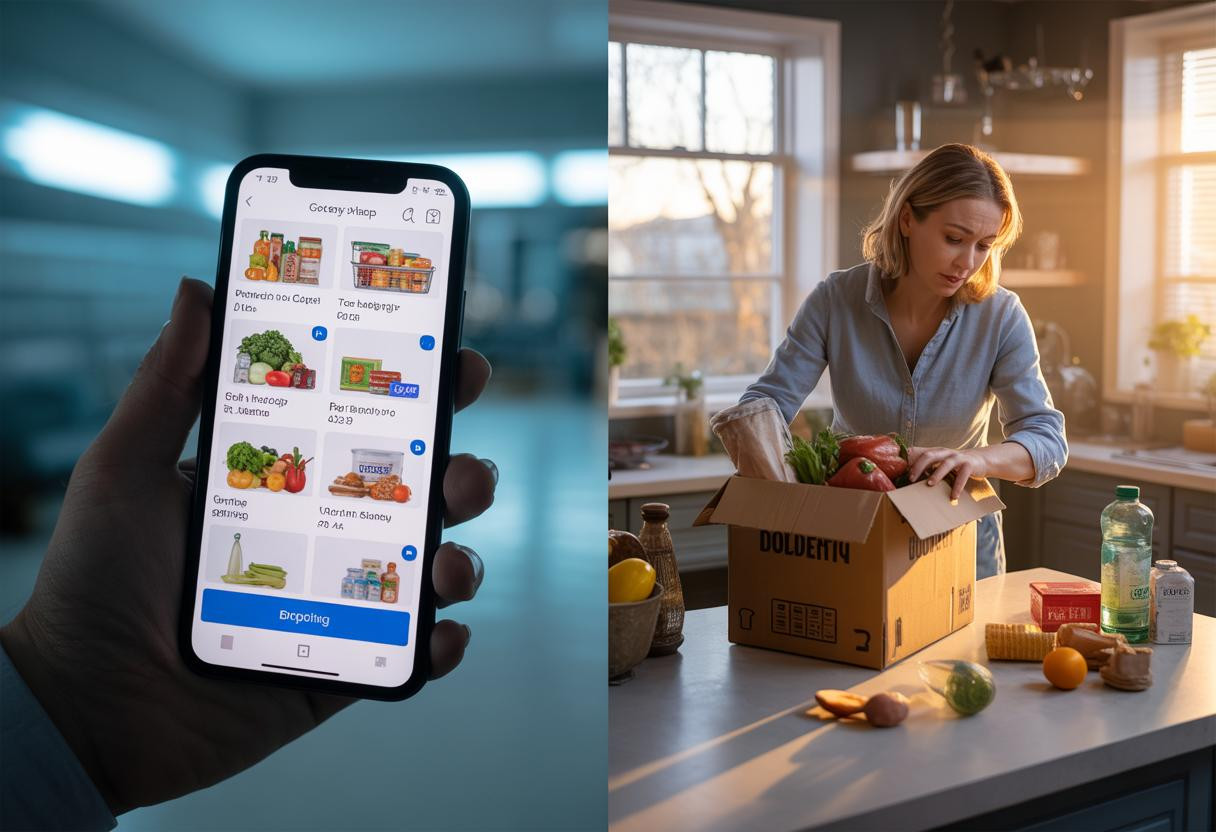When you click “order” on your virtual grocery cart, you expect all items to arrive at your doorstep. Unfortunately, this isn’t always the case. Online grocery delivery has become increasingly problematic, with many consumers reporting missing items and refund headaches that turn convenience into frustration. A 2025 consumer survey reveals the worst offenders and what you can do to avoid these common pitfalls.
The supermarket giants falling short
Not all grocery chains are created equal when it comes to reliable delivery. Major retailers with the highest rates of missing items include those with the largest footprints but smallest staff-to-order ratios. These understaffed operations often struggle to maintain accurate inventory systems.
“The disconnect between what’s shown as available online versus what’s actually on store shelves is the root of most delivery disappointments,” explains Maria Gonzalez, retail supply chain analyst. “Many supermarkets haven’t invested in real-time inventory management systems that can prevent these issues.”
Missing items: more than just an inconvenience
When your groceries arrive with items missing, it’s like ordering a puzzle with missing pieces—the final picture just doesn’t come together. For many families, these missing items can derail meal plans and require additional shopping trips, defeating the purpose of delivery service.
David Chen, who relies on grocery delivery for his elderly parents, shares: “Last month, half the ingredients for my mother’s medication-friendly meals were missing. The customer service app offered a refund but couldn’t deliver the missing items for three days.”
The refund runaround
Getting your money back shouldn’t feel like navigating a maze blindfolded, but many consumers report exactly this experience. Refund processes vary widely between supermarkets, with some taking weeks to process returns for items you never received.
Common refund complaints include:
- Required photo evidence for missing items
- Multiple follow-up calls necessary
- Refunds issued as store credit instead of original payment method
- Extended processing times exceeding 14 days
Supply chain struggles and inventory chaos
Behind the scenes, many supermarkets are battling financial challenges and supply chain disruptions that directly impact their ability to fulfill online orders accurately. Unrealistic promises of same-day delivery despite understaffing create a perfect storm for disappointment.
Food safety concerns when substitutions go wrong
When items are missing, some stores automatically substitute alternatives—sometimes with concerning results. Reports of allergen-containing substitutions have raised alarms, especially considering that many foods contain unexpected ingredients that could cause reactions.
Similarly, controversial food additives might appear in substitute products without customer awareness.
How to protect yourself from delivery disappointment
Smart shoppers are finding ways to minimize these frustrations:
- Shop from stores with dedicated online fulfillment centers
- Order at least 48 hours before needed items are required
- Screenshot your order confirmation as proof of purchase
- Check store reviews specifically mentioning delivery reliability
Is premium delivery worth the extra cost?
Some consumers report fewer issues with premium delivery services, though the cost can be substantial. For those relying on regular deliveries, the investment might be worthwhile compared to the frustration of missing essentials.
“Think of premium delivery as investing in reliability,” suggests consumer advocate Tanya Williams. “The upfront cost often saves money and stress in the long run.”
Could your next grocery order be complete?
As online grocery shopping continues to evolve, delivery reliability will likely improve—but until then, careful selection of your delivery provider remains essential. By choosing supermarkets known for accuracy over those constantly missing the mark, you’ll save yourself countless headaches and ensure dinner makes it to the table as planned.
